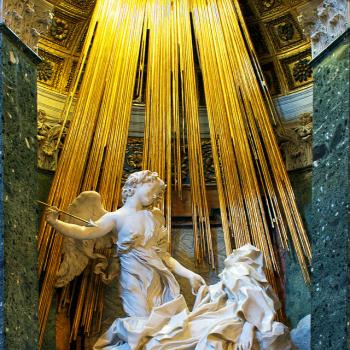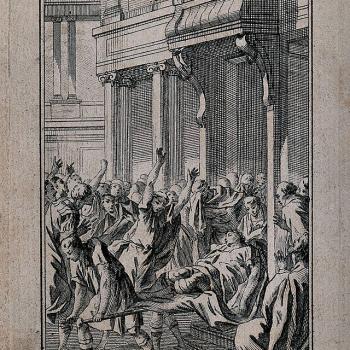
WILD KINGDOM A Reflection on Living With Pets
A Sermon by
James Ishmael Ford
8 June 2008
First Unitarian Society
West Newton, Massachusetts
Text
Most High, all-powerful, all-good Lord, All praise is Yours, all glory, honor and blessings. To you alone, Most High, do they belong; no mortal lips are worthy to pronounce Your Name. We praise You, Lord, for all Your creatures, especially for Brother Sun, who is the day through whom You give us light. And he is beautiful and radiant with great splendor, of You Most High, he bears your likeness. We praise You, Lord, for Sister Moon and the stars, in the heavens you have made them bright, precious and fair. We praise You, Lord, for Brothers Wind and Air, fair and stormy, all weather’s moods, by which You cherish all that You have made. We praise You, Lord, for Sister Water, so useful, humble, precious and pure. We praise You, Lord, for Brother Fire, through whom You light the night. He is beautiful, playful, robust, and strong. We praise You, Lord, for Sister Earth, who sustains us with her fruits, colored flowers, and herbs. We praise You, Lord, for those who pardon, for love of You bear sickness and trial. Blessed are those who endure in peace, by You Most High, they will be crowned. We praise You, Lord, for Sister Death, from whom no-one living can escape. Woe to those who die in their sins! Blessed are those that She finds doing Your Will. No second death can do them harm. We praise and bless You, Lord, and give You thanks, and serve You in all humility.
St Francis (attributed)
My thinking for today’s reflection was sparked by the fact two of our Coming-of-Agers spoke of how important they found our human relationship with animals. While there are many directions this could go, and I considered a number of those options, I found myself returning over and over again to pets. So, today I hope you’ll indulge a bit of a meander, a wandering reflection on our lives with, as some say, our animal companions. Some stories, some reflections, and just the most tentative of conclusions.
In this context, not long ago I was preaching at another Unitarian Universalist congregation, and during the sermon I mentioned in passing how there are two cats in our household. After the service, as I was shaking hands with people at the entrance to the church, one woman came up to me and offered how she, too, had cats. I nodded. She then offered, “They’re Unitarian cats.” Before I could ask how she knew this she asked what religion were the cats in our family? As I had not actually thought about this before, I was as surprised as she, to hear coming out of my mouth that in my opinion our cats were Satanists.
As I say, we’re cat people, and we have the scars to prove it. Turns out we’re not that uncommon in having this bizarre relationship, living with alien creatures. Just shy of thirty-four percent of American households have at least one cat. If you care to know, and as I’ve looked it up, I’ll let you know, it turns out thirty-nine percent of American households have at least one dog. Of course pets, animal companions, aren’t limited to cats and dogs. We count in our families everything from guinea pigs and hamsters to iguanas and snakes, to parakeets and parrots, pot-bellied pigs, weasels and small horses. Frankly, for one family or another probably just about anything that breathes is a possible candidate.
To all appearances we humans are herd animals. And we like to herd not just wirh other humans, but also other creatures. Our distant ancestors probably first found common cause with wolves, as mutually beneficial. Possibly as far back as fifteen thousand years ago, probably in China, people formally domesticated a subset of wolves, our dogs. Cats entered the picture a bit later, but it looks like they may have arrived as gods. Or, at least, ours tend to think so. How goes that two-panel cartoon? The one with the dog looking at the humans and thinking “my family,” while the one with the cat looking at the humans thinks “my staff.”
Our relationships with other animals, and please note that “other,” is long and complex. Frankly, I don’t understand how anyone can look at us humans with anywhere near objective eyes and think that we are different in anything other than degree from other animals. Everything about us is shared in some degree, including the beginnings of language and even our vaunted ability to make tools. We may be, and I think we are, marvels of evolution. But we are completely of the natural world, from which we derive our being and our life, and upon which we are completely dependent.
So, what might we learn about ourselves by contemplating the animals with which we share this world, and particularly, I find myself considering, those animals with which we most intimately share our lives? This is hardly a new enterprise. Mostly we’ve used such reflections about animals as screens upon which we paint pictures of ourselves. The story of the ant and the grasshopper, which we witnessed so beautifully performed as a dance is as old as Aesop and as recent as Toni Morrison, a venerable tradition of giving human character to animals. I think this is a worthy project.
While I think trying to understand animals as they are is also important, in some ways probably the best we get is found within noticing our projections. However we do so, so much can be revealed within our open hearted reflection on these encounters close and distant all at once.
One scene I watched repeatedly some years ago comes to mind as I think along these lines. Back in seminary we had two cats, actually we had them for eighteen years, both of whom died before the Satanists came into our lives. This anecdote dates from about twenty years ago, but remains as fresh a memory as I have. One of our cats was named Basti, which is short for Bastet, Queen of the Nile. Of course as anyone who has read T. S. Eliot knows, cats have several names. Her true name appears to have been “her Fatness.” Still, out of respect we usually called her Basti.
Basti was an enormous calico. She had a tiny head perched atop her rotund body. She was sweet as the day was long but had the brains of a small rock. At the time we lived in graduate student housing on the Pacific School of Religion’s campus, which itself was located on a large hill overlooking the University of California, with commanding views of much of the San Francisco Bay Area. A lovely place to live for a few years.
Now we were on the ground level of our particular building and our living room had a large window that looked out not on those vistas, but rather on a pathway used by students coming and going. There was a very narrow sill that Basti could just barely lay on to sun herself. With maybe a quarter of her girth hanging over the edge, her balance was precarious. But she loved the spot as perfect to catch the afternoon sun. As she lay there, invariably people would walk by and notice her. They would stop and wave, or maybe even tap slightly on the window. She would gaze up at them, her purr would fire up like an old one-cylinder lawn mower, and she would automatically turn to expose her stomach for rubbing. And then, of course, having lost her balance, she would then fall off the sill.
We were in that apartment for a year. She did this nearly every day for that year. So many things, so many thoughts. For one, there’s dumb and there’s too dumb to come in out of the rain. For another, the endless hope that springs within the beating heart, whether human or other. Maybe this time. Maybe this time.
The lessons we can glean are many. Robert Hardies, minister of our UU congregation in Washington DC once told how he’d announced that the next week he’d be preaching on unconditional love. A congregant came up to him later and said, “Don’t forget to talk about the pets” As I read that, I thought, probably a dog person.
Which reminds me of a story told by John Parker Manwell and Phyllis Hubbell, a UU clergy couple in Baltimore. I think among the many lessons we might glean from a reflection on our relationship to animals, it might be particularly useful.
It’s a story “about a T-ball game, a story credited (originally) to storyteller Bill Harley. If like me, you grew up before T-ball, you need to know that it’s a game like softball, but with gentle rules for 5- to 8-year olds, kids just starting out in life.
“Now the particular T-ball team Bill described had a girl on it we’ll call Tracy. Tracy had coke-bottle glasses and hearing aids on each ear. She came every week though she wasn’t very good. She tried hard, but she never hit the ball, not once. Never came close. Everyone on both sides of the game cheered for her anyway.
“The last game of the season, Tracy came up to bat, and through some fluke, she creamed the ball. Smoked it right up the middle, through the legs of the 17 players who had all come in close expecting an easy out. Kids dodged as the ball went by or looked absentmindedly at it as it rolled unstopped, heading into centerfield. When Tracy saw what she had done, she stood at home plate, delighted at her feat.
“Run! yelled her coach. Run! Her parents were on their feet screaming. All the other parents rose too. Run, Tracy, run, run! Tracy turned and smiled at them, and then, happy to please, galumphed off to first base.
“Keep going, Tracy, Keep going! yelled the first base coach. Happy to please, Tracy headed to second. By the time she was halfway to second, seven members of the opposition had reached the ball and were passing it among themselves. The ball began to make its long journey home.
“Tracy headed to third. Adults fell out of the bleachers. Go, Tracy, go! Tracy reached third and stopped, but she was very close to her parents now and she got the idea. Tracy started for home.
“Then it happened. During the excitement, no one had noticed the 12-year-old geriatric mutt that had lazily settled itself down in front of the bleachers five feet from the third-base line. As Tracy rounded third, the dog, awakened by the screaming, sat up and wagged its tail at Tracy as she headed towards home. The tongue hung out, the mouth pulled back in an unmistakable canine smile, and Tracy stopped, right there. Halfway home, 30 feet from a legitimate home run.
“Tracy looked at the dog. Her coach called, Come on, Tracy! Come on home! The crowd cheered, Go, Tracy, go! She looked at all the adults. She looked at her own parents shrieking and catching it all on video. She looked at the dog. The dog wagged its tail.
“She looked at her coach. She looked at home plate. She looked at the dog. Everything went to slow motion. She went for the dog! It was a moment of complete, stunned silence. And then, perhaps, not as loud but deeper, longer, more heartfelt, everyone applauded as Tracy fell to her knees to hug the dog.
“Two roads diverged on a third-base line. Tracy went for the dog.”
I believe the best lesson we might glean from our ongoing relationships with animals is how they teach us over and over again how to order our priorities. This is how we fit in this world best. Admiring the old cat turning over to get her tummy rubbed and falling off the sill. Going, not for home base, but for the dog.
There’s something here, if we’re willing to pause, to notice, to reach out and scratch an old furry head.
Amen












